Heart of Gold
The Peerless Pendants of Korea’s Little-known Golden Age
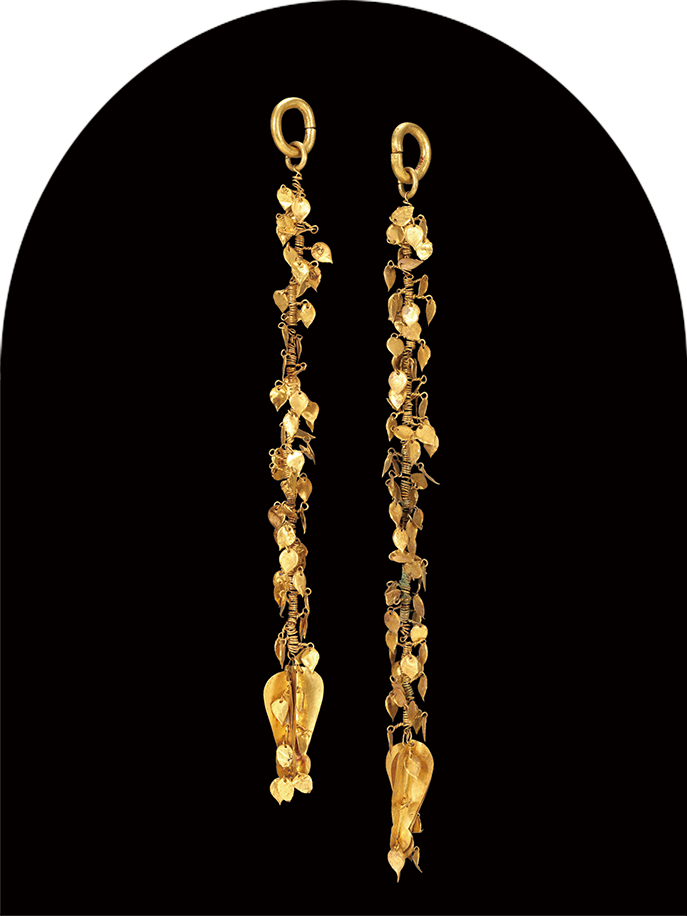
WRITTEN BY
Tim Alper
contributing writer
Photos courtesy of
National Museum of Korea
During Korea’s Three Kingdom Period (BCE 57 BC-668 CE), gold held a special status. Some rulers at the time wanted to look so radiant that they adorned their crowns and belts with eye-catching golden pendants that still dazzle to this day.
When was Korea’s golden age? If we are speaking figuratively, some may answer the Joseon Dynasty (1392-1910), the period most often revisited in modern K-dramas. But if we are talking literally, you need to go back much further―to the era of the Shilla. The Shilla was one of the Three Kingdoms that ruled the peninsula between BCE 57 BC and 668 of the Common Era. Its monarchs ruled over the southeastern and central parts of the peninsula, with Baekje to the west and Goguryeo to the north.
The Shilla Kingdom was a hotbed of international culture―and its monarchs adored nothing more than discovering the secrets and treasures of far-off lands, and decorating themselves with the spoils of trade. The kingdom tapped into the Silk Road, and Chinese merchants were no strangers to Shilla’s busy ports.
A visit to the city of Gyeongju, the Shilla capital, gives modern people a taste of what life must have been like for the rulers of the kingdom. The city is replete with a number of incredible royal tombs that visitors can tour.
But if you want to peer even further behind the Shilla curtain and discover the secrets of this golden age, it pays to zoom into an often-overlooked item of royal jewelry―deurigae (the hanging pendant).

Awesome Ornaments
Travelers from as far as Persia wrote about how surprised they were by the amount of gold they saw on display in Shilla. And we can assume that these foreign visitors’ accounts were likely inspired by some of the Kingdom’s rulers’ distinctive crowns.
While golden crowns were common in the ancient world, members of the Shilla royal family did not just adorn the tops of their heads with gold―they also decorated the edges of their faces with the precious metal, as well as their belts and even their horses!
To understand why they did this, one needs to explore the Shilla’s origins. Some of the Shilla rulers claimed to hail from nomadic stock―and wrote that they were related to tribes who roamed the Eurasian steppes on horseback until around the time of Christ. Many of these nomads carried a range of helpful items on their belts, such as small knives, medicine and tweezers―much like the modern Swiss Army knife.
At the National Museum of Korea in Central Seoul, you can see what happened when these nomads―or, more accurately, their descendants―took power. A brilliant golden belt, thought to have been forged in the Fifth Century CE was worn along with a golden crown. This belt’s pendants and attachments were almost certainly ornamental, however, and feature stunning curved jade pieces.
In all, the belt features 23 ornaments, including several rows of gold plates of various shapes, sizes and lengths, two long, pen-shaped ornaments and multiple jade items. Modern historians agree that such ornaments are symbolic representations. They are meant to recall the items nomads once used to pitch their tents, pull items from horses’ hooves or even perform religious rituals.
But the symbolic nature of these items was not limited to the supposed nomadic link. To the people of Shilla, gold symbolized power and authority―it was the mark of a king, a high priest or a member of the royal family.
As such, crowns also featured more or less gold―depending on how high the wearer’s social status was. A minor royal might have worn a more simple fabric-based headdress, which featured only one deurigae. But the king or his wife might wear something altogether more grand: A glorious golden headpiece with multiple golden deurigaes and jade decorations.
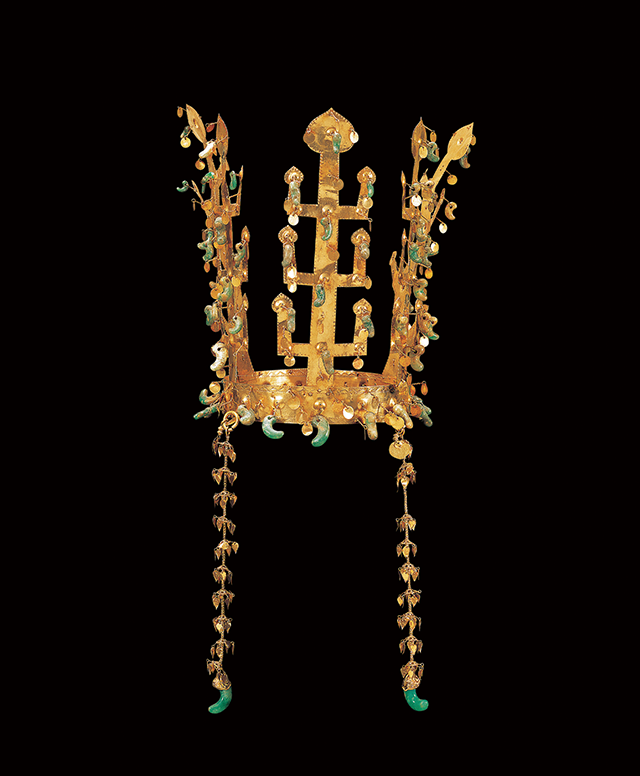
Deurigae enhance the lavishness of the gold crown.
Glittering Gold
The National Museum of Korea also houses one of the most spectacular crowns in all of Korean history―although very little is known about its wearer. In May 2022, United States President Joe Biden made a state visit to Korea, where he and Korean President Yoon Suk Yeol took the time to visit the museum―and the magnificent crown.
The piece dates back to the late Fourth or the early Fifth Century CE and is almost 28cm tall. Deurigaes, however, reach down over 30cm. As such, the face of its wearer (assumed to be a queen consort) would have shone with a radiance that observers would have assumed to be heavenly glory.
The piece was retrieved from a Gyeongju tomb in the 1970s. Its front headband, which would have covered its wearer’s forehead, features three pieces that look like mountains, the one at the rear towering over the other two. Toward the rear on each side, long antler-like pieces protrude.
But deurigaes are what give this crown its special luster. It features six thick rings that are no mere flimsy clasps. Hanging from these rings are six pendants (three on each side). The two outer pieces are the longest, and would have possibly hung inside the shoulder. The four shorter inner pieces are set at a height that would have reached its owner’s forehead, temples or possibly cheekbones.
In a style typical of Shilla deurigaes, much of the gold items that adorn them are shaped like leaves―much like hanging vines made of precious metals and gems. The tips of the two innermost pieces are finished with two pieces of deep-green curved jade.
Colored glass for such pieces was often sourced from as far afield as Indonesia―a fact that speaks volumes about the affluence of Shilla and the cosmopolitan nature of its trading network.
Although most of the secrets of the Shilla’s amazing golden deurigaes are lost to the ravages of time, modern people from all walks of life―from young children to presidents―will forever be fascinated by these unique golden treasures.
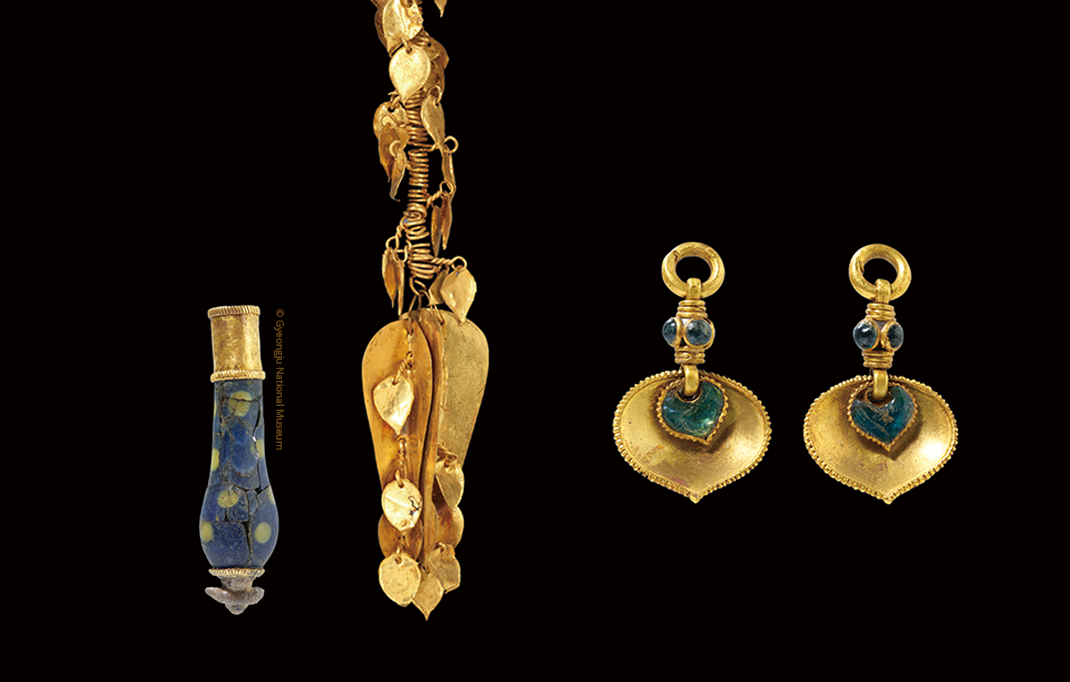
Details of different types of deurigae.
Other Articles
-

Special Ⅰ Man-made Caves Find New Life
-

Special Ⅱ Returned to Nature
-

Trend Underground Dining
-

Hidden View The Highest Point
-
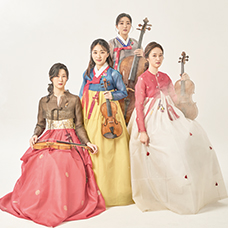
Interview Esmé Quartet
-
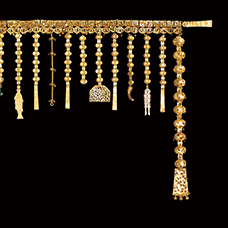
Art of Detail Heart of Gold
-
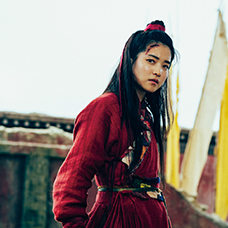
Film & TV Alienoid Part 1
-
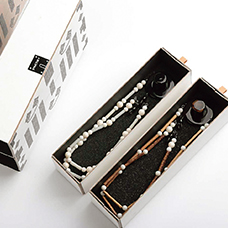
Collaboration Daily Life Embraces Korean Tradition
-

Current Korea South Korea’s Diplomatic Shift
-

Global Korea Encountering the Beauty of Hanbok at Oskemen
